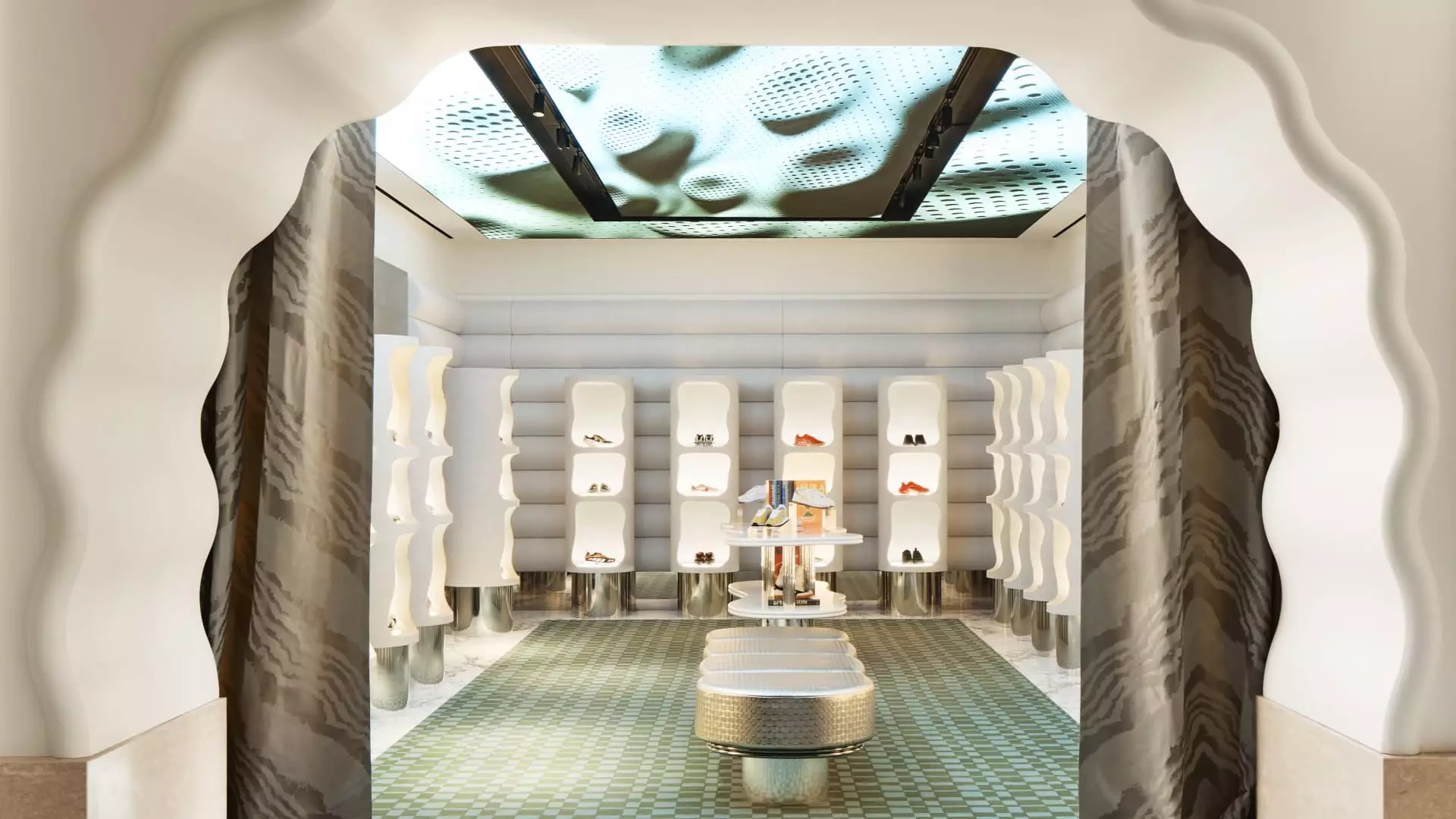The recent grand opening of Printemps’ first U.S. store in New York City shines a beacon on the allure of luxury retail in a city that has long been a melting pot of high-end brands and aspirational shoppers. However, the timing could not be more precarious. As Printemps enters an atmosphere where luxury spending is on a downward trend due to economic uncertainty, the question arises: is this a bold move towards innovation or a reckless gamble that lacks foresight?
The Opulence of Printemps
Spanning a staggering 55,000 square feet, the Printemps store is designed to captivate. With eye-catching architectural features and a unique blend of sought-after luxury brands paired with rare French finds, it seeks to evoke the charm of Parisian retail. The store goes beyond mere shopping; it offers experiences akin to a French apartment, complete with a café serving delicacies and a “shoe forest” filled with exquisite footwear. Such a lavish approach aligns with the store’s image; however, this has a darker undertone in the current climate. Customers may be enchanted by the luxurious aesthetics, but as wallets tighten, how many will be drawn in to actually make a purchase?
The Vanishing Luxury Market
Recent reports from consulting firm Kearney indicate a sobering trend in global luxury spending, with projections showing only a 1% to 3% growth through 2027. This stagnation is particularly pronounced in key markets such as China, where luxury consumption has not rebounded to pre-pandemic levels. Meanwhile, inflation continues to loom large in the U.S., where even affluent consumers are becoming cautious about discretionary spending. Printemps cannot ignore these realities. By investing heavily in a new store during a period of declining luxury sales, they risk becoming yet another sad footnote in the chronicles of brands that didn’t heed the signs of an impending economic downturn.
Is the Experience Enough?
In the current luxury landscape, the allure of in-person shopping is often touted as irreplaceable, especially when experiences are so intertwined with customer service. Kearney’s Brian Ehrig emphasizes the importance of personalized service in high-end retail. While this may be true, does a luxury shopping experience truly provide enough incentive for consumers to abandon their newfound frugality? In an era where online retail has dominated, the idea that shoppers will flock to physical stores for the sake of an upscale experience seems to be increasingly optimistic. There’s a fine line between delivering a lavish experience and enticing potential customers to spend money they may be hesitant to part with.
Targeting Aspirational Shoppers
A particularly interesting angle of Printemps’ strategy lies in its accommodating approach towards aspirational shoppers. By interspersing more accessible price points within their luxury offerings, they intend to attract not only affluent customers but also those who might walk in for a coffee or browse for a modest gift. This could work as both a shield and a sword against the potential downturn in luxury spending. On one end, it democratizes the experience; on the other, it risks diluting the brand’s luxury aura. Will customers perceive this approach as an invitation to engage or as a signal that the opulence of the brand is missing the mark?
The Before-and-After of Retail Shifts
Printemps aims to differentiate itself with pop-up displays and a variety of dining options, reminiscent of an immersive art installation more than a traditional department store. This strategy leans heavily into a new retail paradigm shaped by the Covid-19 pandemic, where physical stores are embracing a cultural aspect rather than just a commercial one. However, as alluring as this strategy sounds, its sustainability remains a question mark. Are these experiential elements truly resonating with a consumer base that is increasingly focused on necessity over luxury?
The Long-term Viability of Printemps in NYC
Printemps may find itself at a crossroads within a short span of time. As the third-largest spenders on their products, Americans have showcased potential support for the brand, with sales reportedly tripling from 2019 to 2024. But there’s no guarantee that this trend will continue in the face of economic risk. The retailer’s decision to pivot into the American market, especially during uncertain times, begs the question: can emotional connections to luxury still hold water in the face of harsh economic realities?
In an industry where prestige, appeal, and lavishness reign supreme, Printemps’ American venture in NYC appears to tread the fine line between opportunity and peril. It remains to be seen whether this Parisian touch will flourish in a landscape marked by economic caution or whether it will wither under the weight of changing consumer sentiments.

